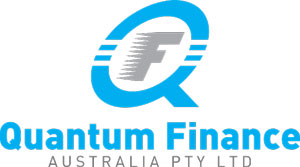
Your Essential Mortgage Comparison Checklist
Updated: April 30th, 2025
Before you choose a home loan, it’s critical to compare your options—not just the interest rates, but the structure, flexibility, and long-term costs. Whether you’re buying your first home or refinancing, making the right call upfront can save you thousands over the life of your loan.
With 20+ years of experience helping Australians secure smarter mortgages, Quantum Finance simplifies the process. Use this checklist to confidently compare loans and find the one that fits your lifestyle.
The Essential Mortgage Comparison Checklist
Decide between principal & interest or interest-only repayments.
Choose between fixed or variable interest rates.
Compare more than just the interest rate (fees, features, flexibility).
Check if you can add setup or exit fees to the loan balance.
Look for flexible repayment features (extra repayments, repayment holidays).
Find out about exit fees or early repayment charges if you refinance later.
Understand key loan types: variable, fixed, interest-only, guarantor, low-doc, line of credit.
Learn core mortgage terms: amortisation, offset, redraw, LVR, etc.
Compare lender types: banks, mortgage brokers, non-bank lenders.
Make sure the loan suits your current income, goals, and risk tolerance.
1. Principal and Interest vs Interest-Only Loans
Are you looking to pay off your loan over time—or just cover interest for now?
- Principal & Interest: You repay both the loan amount and interest. This reduces your debt over time and builds equity.
- Interest-Only: You only pay the interest initially. Ideal if you’re expecting income growth, selling soon, or using it for an investment.
Learn more in our blog on interest-only vs principal loans.
2. Fixed or Variable Interest Rate?
- Fixed Rate: Lock in your interest rate for a set period. Great for budgeting, but less flexible.
- Variable Rate: Your rate may rise or fall. Offers features like offset accounts and early repayments.
Explore fixed-rate loan options and variable loans to see what suits your strategy.
3. Look Beyond the Interest Rate
A low rate doesn’t always mean a low-cost loan. Consider:
- Upfront and ongoing fees
- Offset accounts or redraw facilities
- Flexibility to make extra repayments
- Loan portability
Tip: Use a finance calculator to model your repayments with different lenders.
4. Can You Add Fees to the Mortgage?
Some lenders allow you to roll fees into your loan. This increases your interest over time, but reduces upfront costs. Weigh the pros and cons based on your cash flow.
5. Do You Need Repayment Flexibility?
Life changes—so your loan should adapt. Ask:
- Can you make extra repayments?
- Are repayment holidays allowed?
- Can you reduce payments temporarily?
Flexibility can prevent financial strain, especially during job changes, parental leave, or income fluctuations.
6. Will You Want to Refinance Later?
If you plan to refinance in the future, look for a loan with:
- Low or no exit fees
- No restrictions on switching
- Minimal fixed-term penalties
See our guide on refinancing pros and cons to decide if flexibility matters.
7. Understand Your Mortgage Type
Different home loans suit different borrowers. Common types include:
- Variable Rate Loans: Often feature redraws, offset accounts, and flexible repayments.
- Fixed Rate Loans: Offer stable repayments but may lack flexibility.
- Interest-Only Loans: Popular with investors or those managing cash flow.
- Guarantor Loans: Helpful for first-home buyers with support from parents.
- Low Doc Loans: Tailored for self-employed borrowers with alternative income proof.
- Line of Credit: Allows borrowing against home equity for renovations or other needs.
Need help choosing? Our article on first-time home buyer essentials can point you in the right direction.
8. Know Your Mortgage Terms
Understanding basic loan terms helps you make informed comparisons:
- Principal: The amount you borrow.
- Interest Rate: The cost of borrowing.
- Amortisation: How repayments are spread over the loan term.
- Offset Account: A transaction account linked to your mortgage to reduce interest.
- Redraw Facility: Lets you access extra repayments made on your loan.
9. Know Your Lender Options
You’re not limited to big banks. Consider:
- Mortgage brokers – They access multiple lenders and negotiate on your behalf.
- Non-bank lenders – Often offer competitive rates and flexible policies.
- Online lenders – May approve faster but offer fewer personal services.
Read about how mortgage brokers work and why they might be your best ally.
10. Tailor the Loan to Your Needs
There’s no one-size-fits-all mortgage. Factors to consider:
- Your income stability
- Future plans (e.g. growing your family, investment, relocation)
- Budget and risk tolerance
Bonus Tip: Request a Loan Estimate
Once you’ve shortlisted a few options, request a formal loan estimate. This will help you compare actual costs, including:
- Repayment amounts
- Fees and charges
- Interest over time
Then speak with a trusted mortgage broker to finalise the right product for you.
Compare Smart with Expert Help
Comparing mortgages doesn’t have to be overwhelming. With the right tools—and the right support—you can make confident, informed decisions that set you up for financial success.
Quantum Finance works with over 30 lenders across Australia. We’ll compare the market for you and guide you through the process from start to settlement.
Book a free consult with a mortgage broker in Perth today
